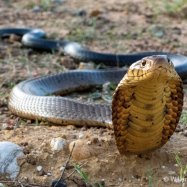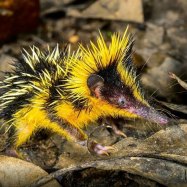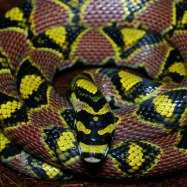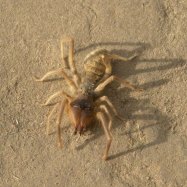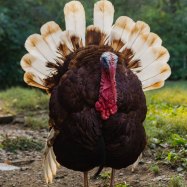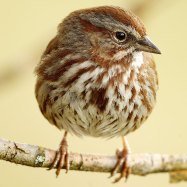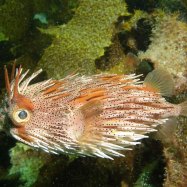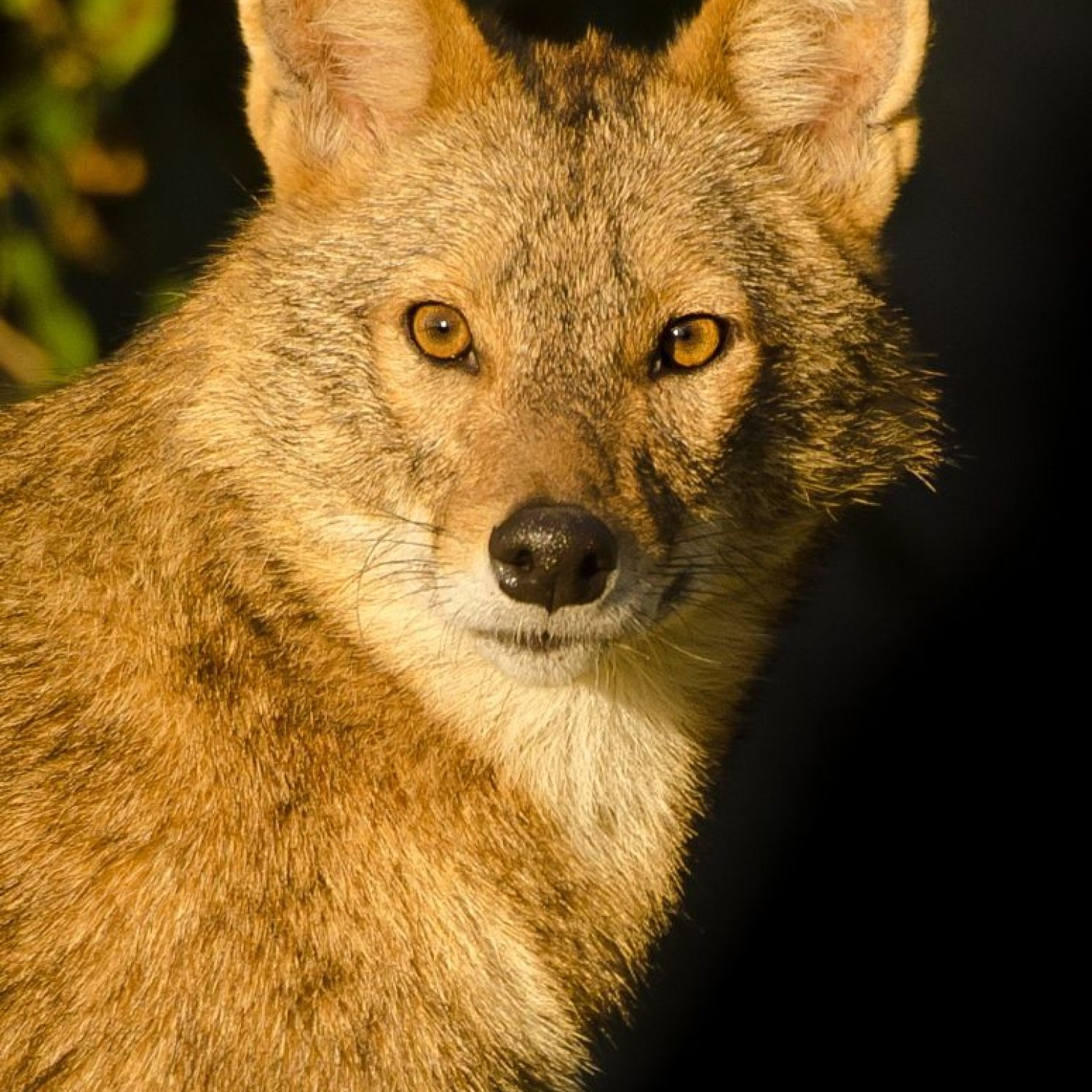
Golden Jackal
70-85 cm
The Golden Jackal, found in a wide range of habitats, belongs to the Canidae family. Its lean and slender body can grow up to 70-85 cm, making it a medium-sized carnivorous animal. With its striking golden fur, the jackal is often mistaken for a fox or a wolf. It is known for its opportunistic feeding habits and its ability to adapt to different environments, making it a common sight in many countries. #GoldenJackal #Canidae #Carnivore #Wildlife
Animal Details Summary:
Common Name: Golden Jackal
Kingdom: Animalia
Habitat: Woodlands, savannahs, deserts, and agricultural lands
The Golden Jackal: A Resilient and Adaptable Canine
The animal kingdom is full of fascinating creatures, each with unique characteristics and behaviors that set them apart from others. Among these is the Golden Jackal, a canid species that has managed to thrive in a wide range of habitats, from deserts to woodlands, and even agricultural lands. With its golden or sandy brown coloration, lean and slender body, and omnivorous diet, this species has captured the attention and curiosity of animal enthusiasts and researchers alike.The Basics: A Scientific Look at the Golden Jackal
Before we delve into the fascinating world of the Golden Jackal, let's start with some basic information about this species Golden Jackal. Scientifically known as Canis aureus, the Golden Jackal belongs to the Animalia kingdom, the Chordata phylum, and the Mammalia class. It is a member of the Carnivora order, specifically the Canidae family, which includes other canids such as wolves, dogs, and coyotes.The Golden Jackal is a native of Africa, Asia, and southeastern Europe, with a wide geographical distribution within these regions. Surprisingly, the country of origin for this species is still unknown, further highlighting the resilient and adaptable nature of these animals.
A Habitat for All Seasons
One of the most remarkable features of the Golden Jackal is its ability to thrive in various habitats, making it a truly versatile and adaptable species. These canids can be found in woodlands, savannahs, deserts, and even agricultural lands. This wide range of habitats has enabled the Golden Jackal to survive in different climates and conditions, making them a hardy and robust species.In fact, researchers have observed these animals being able to withstand extreme temperatures, from scorching deserts to cold and snowy landscapes. This adaptability has also allowed them to expand their range and colonize new territories, showcasing their resilience and survival instincts Gray Fox.
A Varied Diet: The Omnivorous Tendencies of the Golden Jackal
Unlike other canines that are strictly carnivorous, the Golden Jackal has a diverse and omnivorous diet. These animals are opportunistic feeders, and their diet consists of both plants and animals. They are known to feed on a variety of food, including small mammals, birds, reptiles, insects, and even carrion. They have also been observed feeding on fruits, berries, and other plant matter, making them versatile and resourceful hunters.This adaptability in their diet is essential for their survival, especially in areas where food sources may be scarce or unpredictable. By being able to switch between prey and plants, Golden Jackals can thrive in different environments, making them an adaptable and resilient species.
Physical Characteristics: What Makes the Golden Jackal Stand Out
The Golden Jackal may not be the most well-known canid, but it certainly has distinctive features that make it stand out in the animal kingdom. Let's take a closer look at some of these physical characteristics that make this species unique.Golden or Sandy Brown Coloration
As its name suggests, the Golden Jackal has a distinct golden or sandy brown coloration, which can vary depending on its location and season. This coloration allows these animals to blend in with their surroundings, providing them with camouflage and protection from potential predators.However, their coat can also change color, becoming more of a dark or reddish color in the winter months. This feature is known as seasonal coat dimorphism, and it is believed to help these animals regulate their body temperature in colder climates.
Lean and Slender Body Shape
In contrast to other canids, the Golden Jackal has a lean and slender body shape. They have longer legs than most canines, allowing them to run swiftly and gracefully, making them excellent hunters. Their slender body shape also makes them fast and agile, making it easier for them to navigate through different terrains and habitats.Size and Weight: A Closer Look
On average, Golden Jackals measure around 70-85 cm in length, with males being slightly larger than females. They have a weight range of 6-14 kg, with males being on the heavier side. These measurements make them smaller than other canines, such as wolves and coyotes, but larger than foxes.The Behavior of the Golden Jackal: Pack Animals with Unique Traits
As with most canids, Golden Jackals are highly social animals and live in family groups called packs. These packs consist of a dominant male and female, along with their offspring. Members of the pack work together to hunt, raise young, and protect their territory.One unique behavior observed in Golden Jackals is their tendency to form alliances with other animals, such as foxes and birds. These alliances are mutually beneficial, with each species aiding the other in hunting or providing protection. This cooperative and adaptable behavior allows Golden Jackals to survive in some of the harshest environments.
Communication and Sounds
Like other canids, Golden Jackals communicate through a variety of sounds, including barks, yelps, and howls. These vocalizations are crucial for maintaining contact with other pack members, locating prey, and marking their territory. They also use body language, such as tail wagging and body postures, to communicate with each other.A Fearless and Bold Species
Despite their smaller size, Golden Jackals are known for their fearlessness and boldness. They have been observed challenging larger predators and defending their territory with courage and determination. This behavior is believed to be a result of their adaptable nature, making them confident and capable of facing challenges head-on.Conservation Status and Threats to the Golden Jackal
Unfortunately, despite their resilient and adaptable nature, Golden Jackals face several challenges that threaten their population and survival. The International Union for Conservation of Nature (IUCN) has listed the Golden Jackal as a species of "Least Concern" due to its widespread distribution and stable population. However, certain factors could impact this status in the future.One of the main threats to Golden Jackals is habitat loss and fragmentation. As human populations continue to expand, their habitats are being destroyed, forcing these animals to compete for resources and adapt to new and often unsuitable environments. This fragmentation also makes it difficult for packs to maintain contact and could lead to a decline in genetic diversity.
Another threat to the Golden Jackal is hunting and persecution due to conflicts with farmers. These animals are often seen as pests and predators of livestock, resulting in retaliatory killings. As a result, their population is declining in some areas, highlighting the need for conservation efforts and better management of conflicts between humans and wildlife.
Conservation Efforts for the Golden Jackal
Several conservation efforts are in place to protect the Golden Jackal and its habitat. One of these is through the implementation of legislation and protected areas to ensure their habitats are not destroyed or disturbed. Furthermore, researchers are conducting studies to better understand the species and its behaviors, allowing for more effective conservation strategies to be implemented.There are also efforts to reduce conflicts between Golden Jackals and humans. By educating communities and implementing measures to protect livestock, such as predator-proof enclosures, it is possible to reduce the retaliatory killings of these animals.
The Golden Jackal: A Remarkable Canid with Endless Surprises
In conclusion, the Golden Jackal is a truly remarkable canid species, with its resilient and adaptable nature enabling it to thrive in diverse habitats. From its unique coloration and physical characteristics to its cooperative behaviors and astounding adaptation abilities, these animals continue to surprise and fascinate researchers and animal enthusiasts alike.However, the Golden Jackal also faces several challenges that threaten its population and survival. By understanding the threats and implementing effective conservation efforts, we can ensure the continued existence of this fantastic species and appreciate the endless surprises they bring to the animal kingdom.

Golden Jackal
Animal Details Golden Jackal - Scientific Name: Canis aureus
- Category: Animals G
- Scientific Name: Canis aureus
- Common Name: Golden Jackal
- Kingdom: Animalia
- Phylum: Chordata
- Class: Mammalia
- Order: Carnivora
- Family: Canidae
- Habitat: Woodlands, savannahs, deserts, and agricultural lands
- Feeding Method: Omnivorous
- Geographical Distribution: Africa, Asia, Southeastern Europe
- Country of Origin: Unknown
- Location: Wide range of habitats
- Animal Coloration: Golden or sandy brown
- Body Shape: Lean and slender
- Length: 70-85 cm
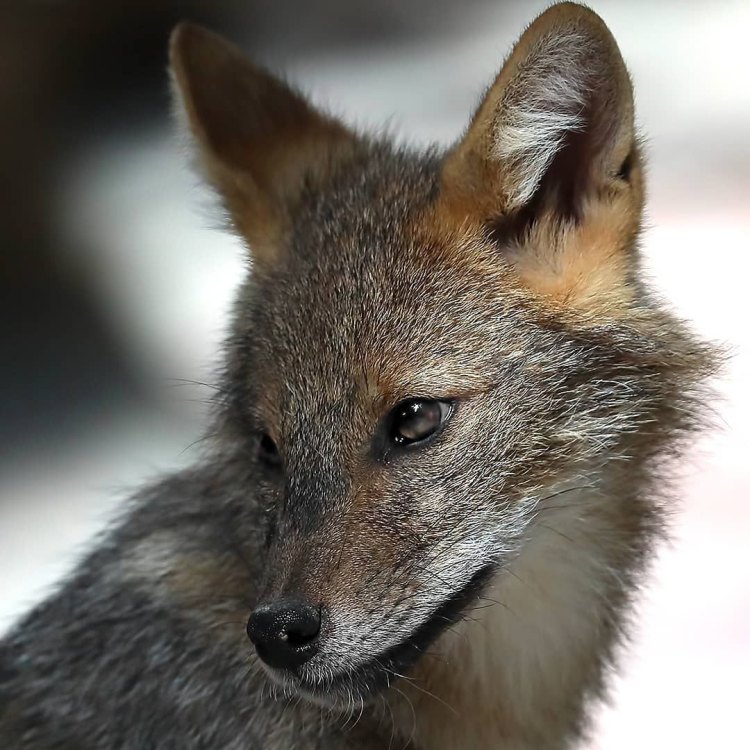
Golden Jackal
- Adult Size: Medium-sized
- Average Lifespan: 6-8 years
- Reproduction: Sexual
- Reproductive Behavior: Monogamous
- Sound or Call: Howling, barking, and whining
- Migration Pattern: Some populations are migratory
- Social Groups: Group or family units
- Behavior: Nocturnal and solitary
- Threats: Habitat loss and fragmentation, hunting, and persecution
- Conservation Status: Least Concern
- Impact on Ecosystem: Ecosystem engineer
- Human Use: Occasionally hunted for its fur and meat
- Distinctive Features: Bushy tail, relatively large ears
- Interesting Facts: Golden jackals are highly adaptable and can thrive in a wide variety of habitats.
- Predator: Large carnivores such as lions, tigers, and hyenas
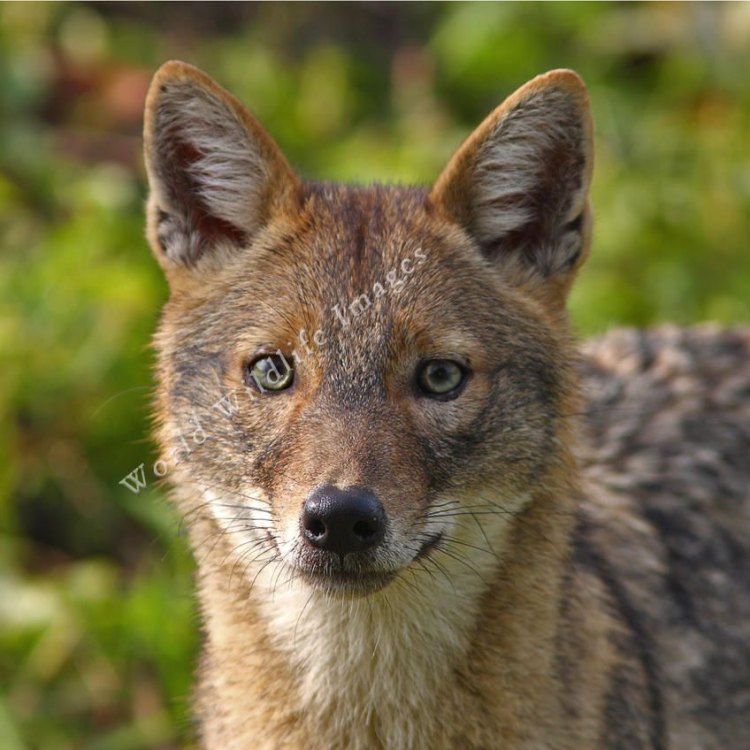
Canis aureus
The Resourceful Golden Jackal: A Highly Adaptable Canine
The golden jackal, scientifically known as Canis aureus, is a fascinating species of canine that can be found in a variety of habitats across Africa, Asia, and Europe. Despite being widely distributed, this animal remains relatively unknown to the general public. However, the golden jackal is a remarkable creature with unique characteristics that make it stand out in the animal kingdom.One of the striking features of the golden jackal is its size PeaceOfAnimals.Com. It is considered a medium-sized canid, weighing between 15 to 35 pounds and standing at around 16 inches in height. However, there is a significant size difference between males and females, with males being larger and heavier than their female counterparts. This species also has distinctive features such as its bushy tail and relatively large ears, making it easily recognizable.
Golden jackals have a relatively short lifespan, averaging between 6 to 8 years in the wild. However, in captivity, they can live up to 16 years. The reason for their shortened lifespan in the wild is due to various threats and challenges they face on a daily basis.
Reproduction in golden jackals is sexual, meaning that they require a male and female to mate in order to reproduce. These canids are monogamous, forming a strong bond with their partner for life. They typically have one litter per year, consisting of 4-6 pups Great Potoo Bird. The gestation period lasts for about 60-65 days, and both parents take part in rearing the young until they reach sexual maturity at around 10 months.
One of the most distinctive traits of golden jackals is their vocalizations. These canids are known for their wide range of sounds, including howling, barking, and whining. They use these calls to communicate with each other, especially during the breeding season. Interestingly, their howls can be heard up to 2 kilometers away, making them efficient communicators.
Golden jackals exhibit various migratory patterns depending on their location. While some populations are sedentary, others are known to be migratory, especially during the breeding season. They typically move in small groups, covering long distances to find suitable mates and territories.
In terms of social behavior, golden jackals live in group or family units, consisting of a mated pair and their young. These units are highly cohesive, with both parents playing an essential role in taking care of their pups. However, outside the breeding season, they are solitary animals, preferring to hunt and forage alone.
These canids are primarily nocturnal, meaning they are active at night and rest during the day. This behavior allows them to avoid competition and predation from larger carnivores, which are their main predators. In fact, large carnivores such as lions, tigers, and hyenas are their primary threat in the wild.
However, the golden jackal's biggest concern is the loss and fragmentation of its habitat. Human encroachment, deforestation, and urbanization have significantly reduced their range and disrupted their natural behaviors. They are also hunted and persecuted for their fur and meat, with some cultures considering them a pest species. As a result, their conservation status is currently listed as Least Concern on the IUCN Red List.
Despite these threats, golden jackals have proven to be resilient and highly adaptable creatures. They have successfully colonized various habitats, including deserts, grasslands, and even urban areas. This adaptability has earned them the title of "ecosystem engineer," meaning they play a vital role in shaping and maintaining their ecosystems.
Their scavenging behavior helps keep ecosystems clean, preventing the spread of diseases and maintaining the balance of the food chain. They also play a crucial role in controlling rodent populations, helping to keep agricultural lands safe from crop damage. These are just some of the essential roles that golden jackals play in their habitats, highlighting their importance in maintaining a healthy ecosystem.
Although not as well-studied as other canid species, golden jackals are fascinating animals with a range of unique features and behaviors. Their adaptability, intelligence, and resilience make them a crucial part of their ecosystems. As humans, it is our responsibility to ensure their survival by protecting their habitats and coexisting with them peacefully.
In conclusion, the golden jackal is a highly resourceful and resilient animal. Its distinctive features, social behavior, reproductive habits, and vocalizations make it an interesting species to observe and learn about. While facing numerous threats and challenges, this canid continues to thrive and play a crucial role in its environment. It is up to us to appreciate and protect this remarkable species for future generations to come.
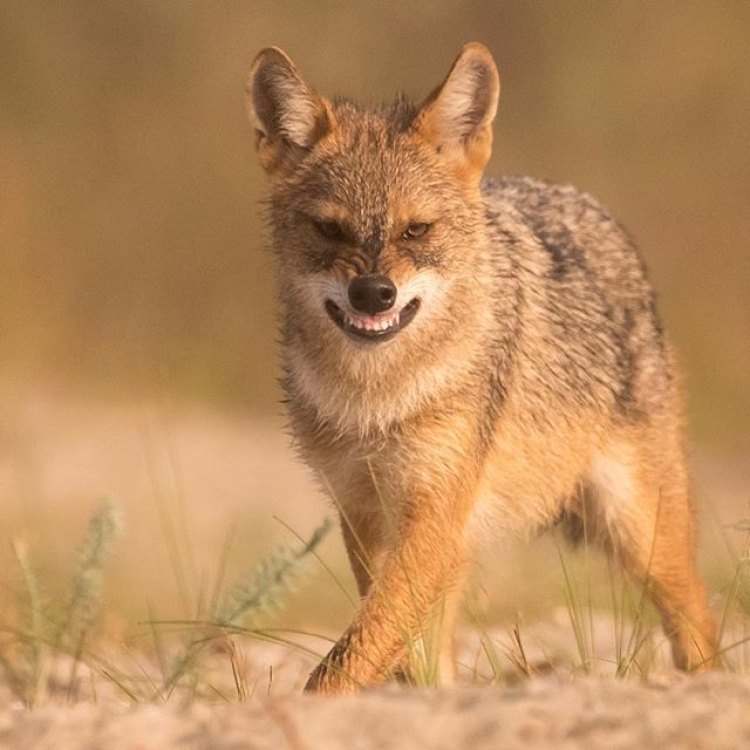
The Golden Jackal: A Resilient and Adaptable Canine
Disclaimer: The content provided is for informational purposes only. We cannot guarantee the accuracy of the information on this page 100%. All information provided here may change without prior notice.

